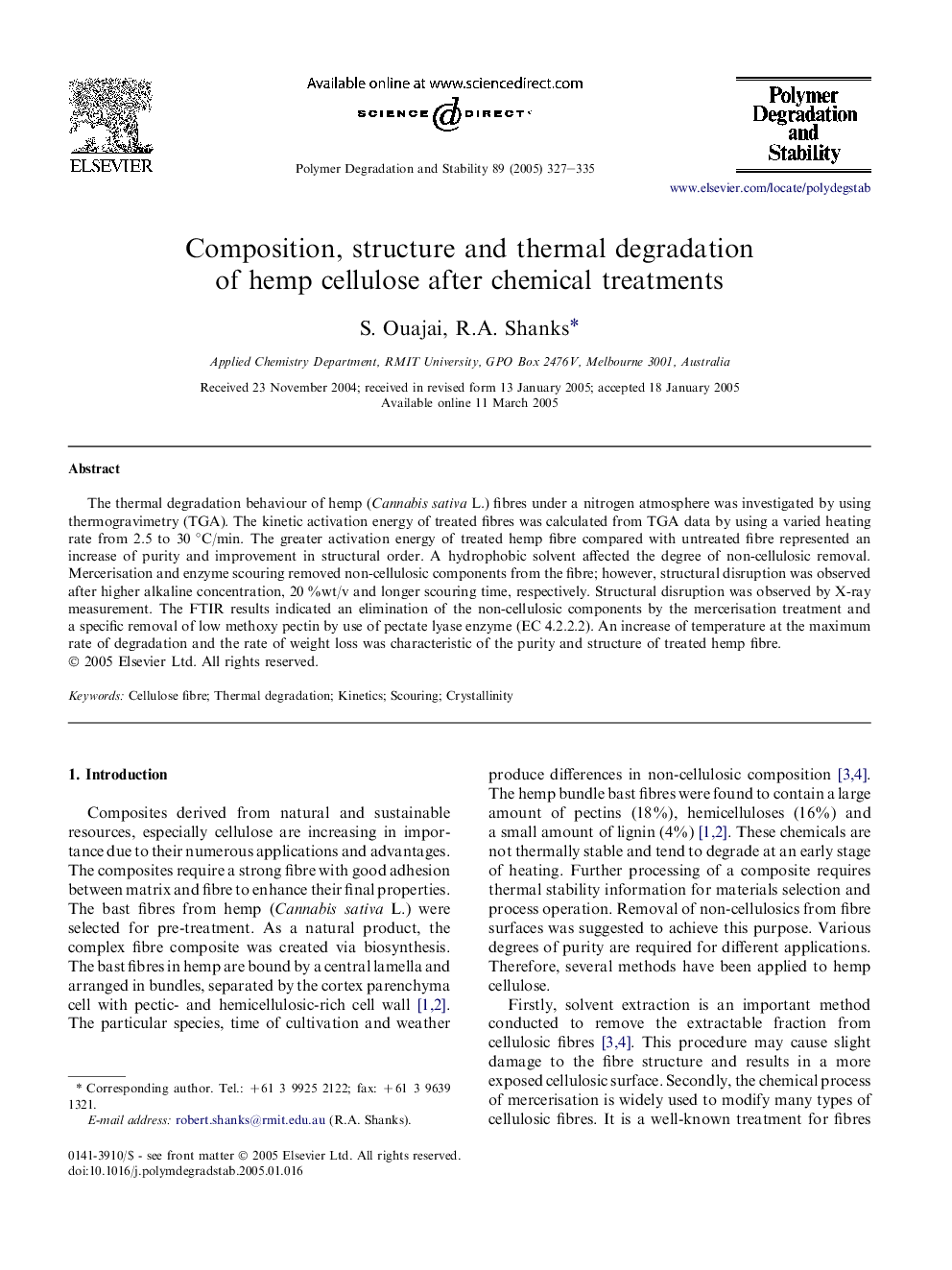| Article ID | Journal | Published Year | Pages | File Type |
|---|---|---|---|---|
| 9560583 | Polymer Degradation and Stability | 2005 | 9 Pages |
Abstract
The thermal degradation behaviour of hemp (Cannabis sativa L.) fibres under a nitrogen atmosphere was investigated by using thermogravimetry (TGA). The kinetic activation energy of treated fibres was calculated from TGA data by using a varied heating rate from 2.5 to 30 °C/min. The greater activation energy of treated hemp fibre compared with untreated fibre represented an increase of purity and improvement in structural order. A hydrophobic solvent affected the degree of non-cellulosic removal. Mercerisation and enzyme scouring removed non-cellulosic components from the fibre; however, structural disruption was observed after higher alkaline concentration, 20 %wt/v and longer scouring time, respectively. Structural disruption was observed by X-ray measurement. The FTIR results indicated an elimination of the non-cellulosic components by the mercerisation treatment and a specific removal of low methoxy pectin by use of pectate lyase enzyme (EC 4.2.2.2). An increase of temperature at the maximum rate of degradation and the rate of weight loss was characteristic of the purity and structure of treated hemp fibre.
Related Topics
Physical Sciences and Engineering
Chemistry
Organic Chemistry
Authors
S. Ouajai, R.A. Shanks,
